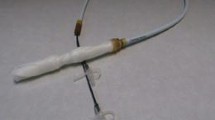Background: Intragastric balloon placement in association with diet for weight reduction is steadily gaining popularity. However, long-term follow-up studies on the effect of this method in maintaining weight loss are lacking. This study evaluated the long-term outcome following balloon removal in morbidly obese patients who had selected this method for weight loss. Methods: 140 morbidly obese patients who refused bariatric surgery because of fear of complications and mortality, underwent intragastric balloon placement and were followed over a 6- to 30-month period (mean 18.3 months) after balloon extraction. The 34 males and 106 females, with median age 38 years (range 16-62), median weight 122 kg (range 85-203), median BMI 42.3 kg/m2 (range 35-61.3) and median excess weight (EW) 59 kg (range 29-132), received a Bioenterics Intragastric Balloon (BIB). Excess weight loss (EWL) ≥25% when the BIB was removed was considered a success. Weight fluctuations and any further interventional therapy requested by the patients after balloon removal were recorded. Results: 100 patients (71.4%) lost ≥25% of their EW on balloon extraction and were categorized as successes, while 40 patients (28.6%) did not achieve that weight loss and were categorized as failures of the method. During the follow-up period, 44 of the originally successful patients (31.4%) regained weight and were categorized as recurrences, while the remaining 56 patients (40%) maintained their EWL of ≥25% and were considered long-term successes. During follow-up, 45 patients (32.1%) requested and underwent bariatric surgery for their morbid obesity (21 Adjustable Gastric Band, 11 Laparoscopic Sleeve Gastrectomy, 13 Laparoscopic Gastric Bypass). Of these, 13 (32.5%) were from the group of 40 patients categorized as failures on BIB removal, 28 (63.6%) were from the group of 44 patients whose obesity recurred, and 4 (7.1%) were from the 56 patents who although they maintained successful weight loss requested further weight reduction. Conclusions: The BIB served as a first step and a smooth introduction to bariatric surgery for morbidly obese patients who initially refused surgical intervention. The incidence of surgical intervention was double in patients who initially experienced the benefits of weight loss and then had obesity recurrence, compared with patients in whom the method failed. Indeed, a significant number of patients were assisted in their efforts to lose and maintain an acceptable weight loss over a 6- to 30-month follow-up period.
Similar content being viewed by others
Author information
Authors and Affiliations
Rights and permissions
About this article
Cite this article
Melissas, J., Mouzas, J., Filis, D. et al. The Intragastric Balloon – Smoothing the Path to Bariatric Surgery. OBES SURG 16, 897–902 (2006). https://doi.org/10.1381/096089206777822188
Published:
Issue Date:
DOI: https://doi.org/10.1381/096089206777822188




